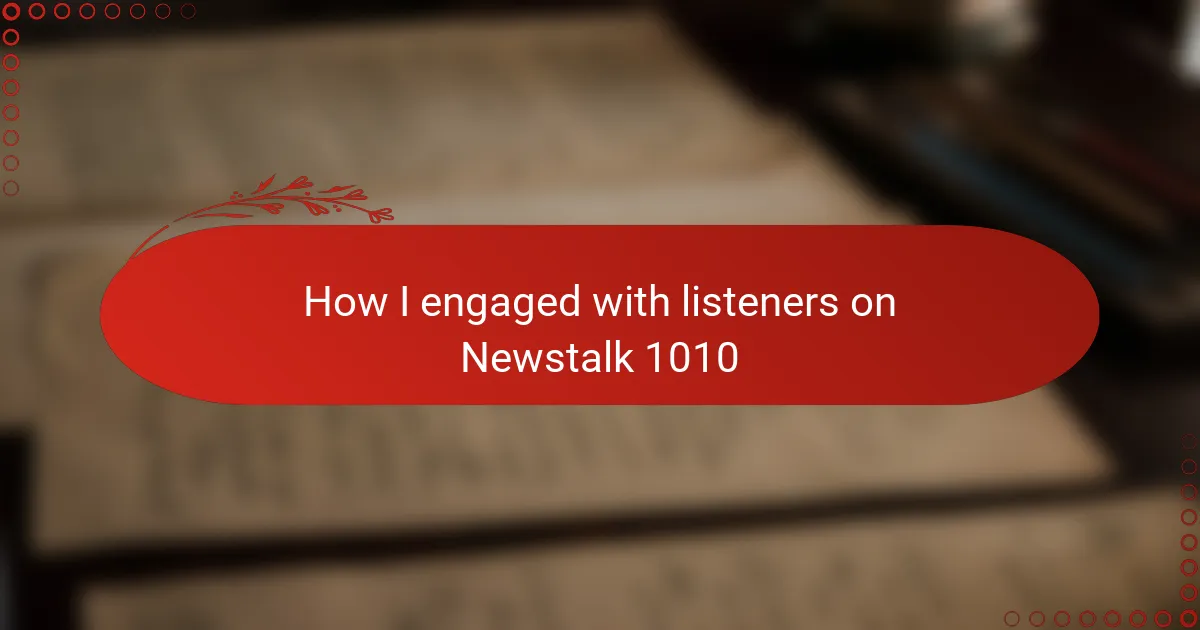Key takeaways
- Listener engagement is crucial for creating a vibrant and interactive radio experience, making audiences feel like active participants.
- Using techniques like open-ended questions and highlighting listener stories enhances emotional connections and encourages interaction.
- Effective tools such as real-time social media feeds and call-in technology enrich the broadcast by fostering spontaneous conversations.
- Measuring engagement success involves assessing both the quantity and depth of listener contributions, indicating a genuine emotional investment.
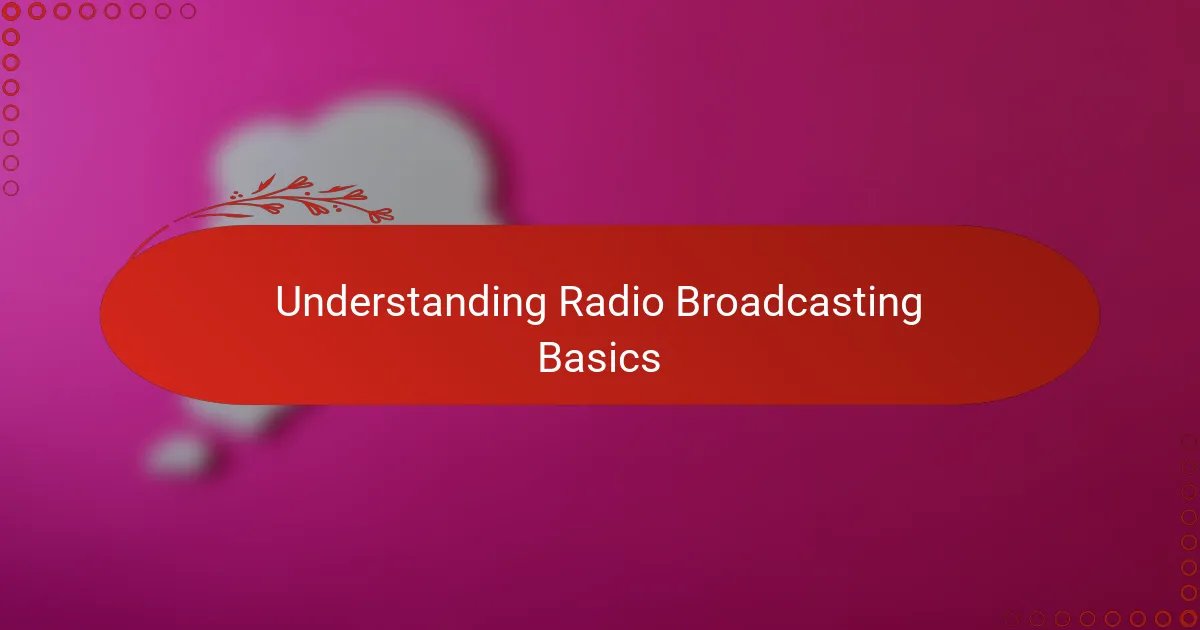
Understanding radio broadcasting basics
At its core, radio broadcasting is about connecting voices to listeners through airwaves—a process that seems simple but involves a careful balance of technology and creativity. I remember my first days learning how signals travel, and it struck me how invisible waves can carry stories, news, and emotions directly into homes and cars, creating a unique intimacy. Have you ever wondered what makes that voice on your radio feel so personal despite the physical distance?
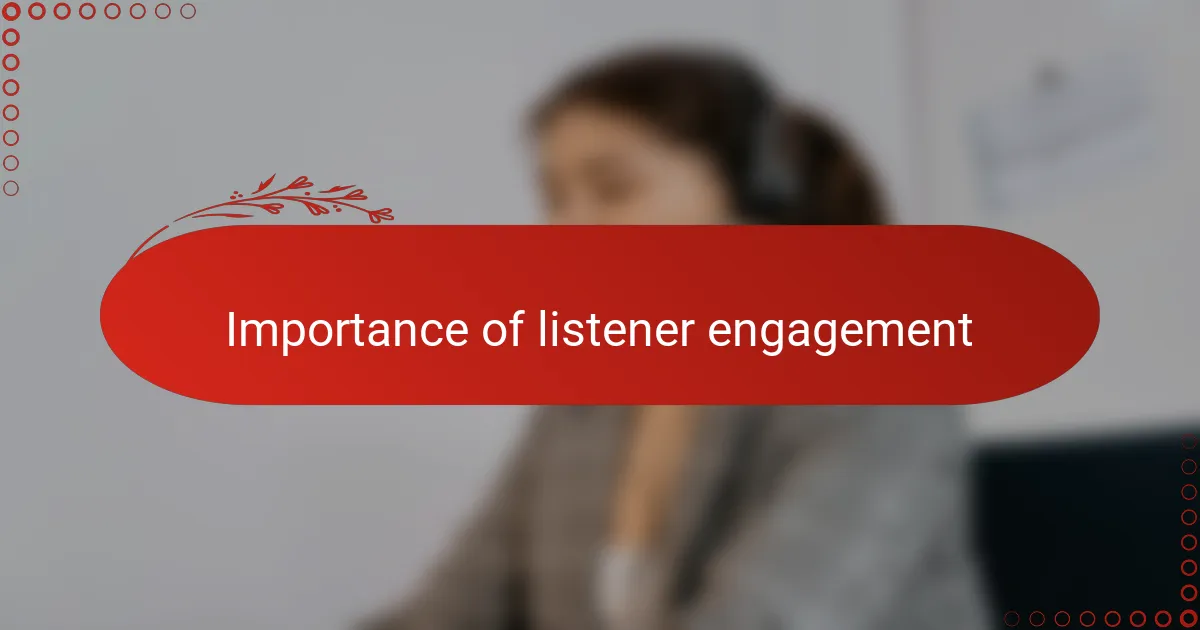
Importance of listener engagement
Listener engagement is the heartbeat of any successful radio show. From my experience on Newstalk 1010, I quickly realized that without active interaction, the broadcast can feel one-sided—like shouting into the void. Have you noticed how a simple call or message can transform a monologue into a meaningful conversation?
When listeners tune in, they’re not just passive recipients; they become part of the story. I recall moments when a listener’s question or comment sparked an entire segment, turning the show into a living, breathing exchange. That dynamic energy is what makes radio feel alive and relevant.
Engaging with listeners also builds trust and loyalty. People want to feel heard and valued, especially in today’s fast-paced media landscape. I often find that when I acknowledge their voices, it deepens our connection, making them eager to come back week after week. Isn’t that what every broadcaster hopes for—a community rather than just an audience?
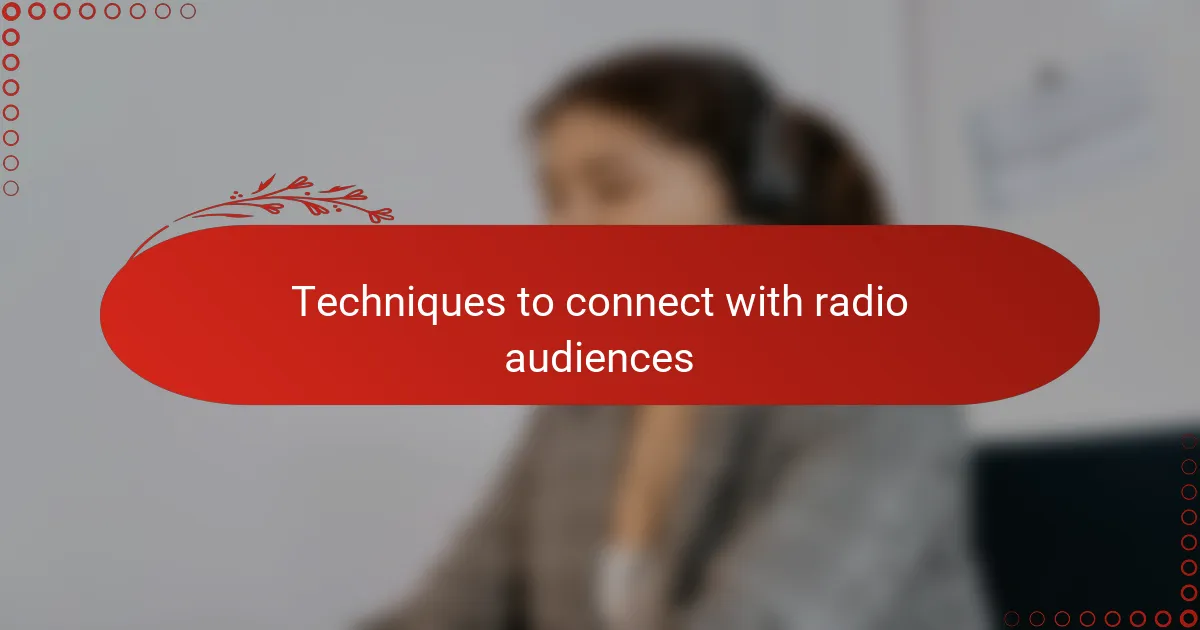
Techniques to connect with radio audiences
One technique I rely on heavily is using open-ended questions during the broadcast. This invites listeners to share their thoughts and experiences, making them feel like active participants rather than distant observers. I’ve found that when I pause and ask, “What do you think about this?” it often prompts a flood of calls and messages, sparking genuine conversations that enrich the show.
Another approach that worked well for me was weaving listener stories into the narrative. By highlighting their experiences on-air, I noticed a profound emotional connection formed. There was one time a caller shared a personal story, and featuring it not only validated their voice but encouraged others to open up, creating a ripple effect of engagement.
Lastly, I make it a point to respond quickly and authentically to listener feedback, whether it comes through social media, calls, or texts. From my observations, people appreciate when their contributions don’t just vanish into silence but receive thoughtful acknowledgement. It tells them, “You matter here,” which in my opinion, is the secret to building a loyal and interactive radio community.
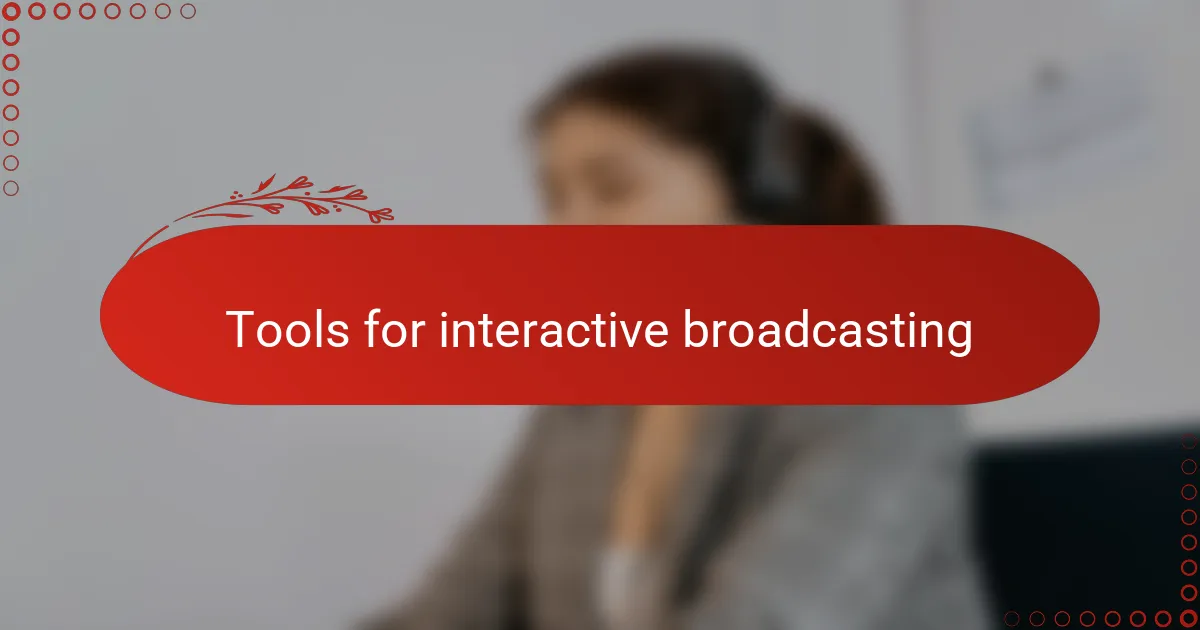
Tools for interactive broadcasting
One tool that transformed my show on Newstalk 1010 was the use of real-time social media feeds. Seeing listener comments scroll live alongside the broadcast made the connection feel immediate and vibrant. Have you ever noticed how reacting to a tweet or message right as it comes in turns a routine segment into a spontaneous conversation?
I also leaned heavily on call-in technology. There’s something irreplaceable about hearing a listener’s voice on-air—it adds warmth and authenticity that text alone can’t capture. I remember one evening when a caller’s passionate viewpoint sparked a heated but respectful debate that energized the entire show.
Text messaging platforms became another essential tool in my toolkit. They allowed me to quickly gather opinions and poll listeners without interrupting the flow. From my experience, sending a simple prompt like, “Text us your thoughts!” creates a flood of responses that keeps the dialogue dynamic and inclusive.
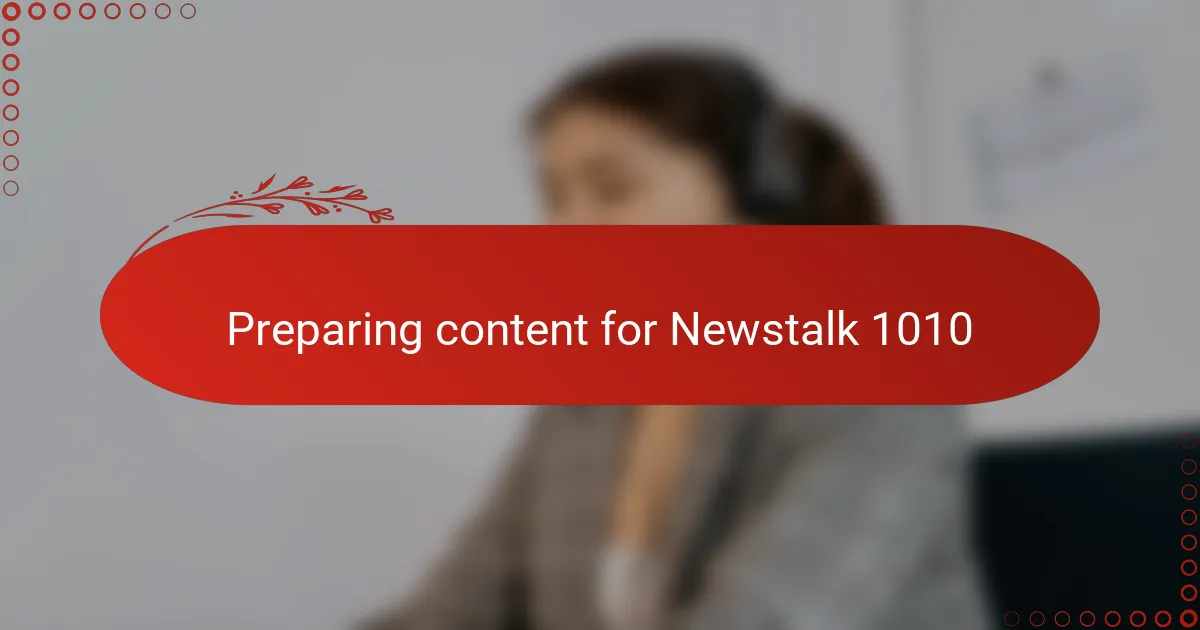
Preparing content for Newstalk 1010
Preparing content for Newstalk 1010 was never just about filling airtime; it was about crafting moments that would resonate with a diverse audience. I found myself spending hours researching timely topics that mattered to our listeners, always asking, “What does this story mean to them?” It’s this mindset that helped me move beyond generic reporting to storytelling that felt relevant and urgent.
I also learned the importance of balancing hard news with lighter segments. There were days when heavy headlines needed a softer touch, so I’d mix in human interest stories or intriguing curiosities to keep the mood engaging. That blend helped maintain listener attention and even sparked unexpected calls—like when someone shared a touching personal story that tied back to a news theme we discussed.
What struck me most was how preparation included anticipating listener responses. I’d try to predict which issues might spark debate or emotion and prepared questions or prompts accordingly. This felt like setting the stage for a conversation rather than a monologue—and, from experience, that made all the difference in making listeners feel part of the broadcast.
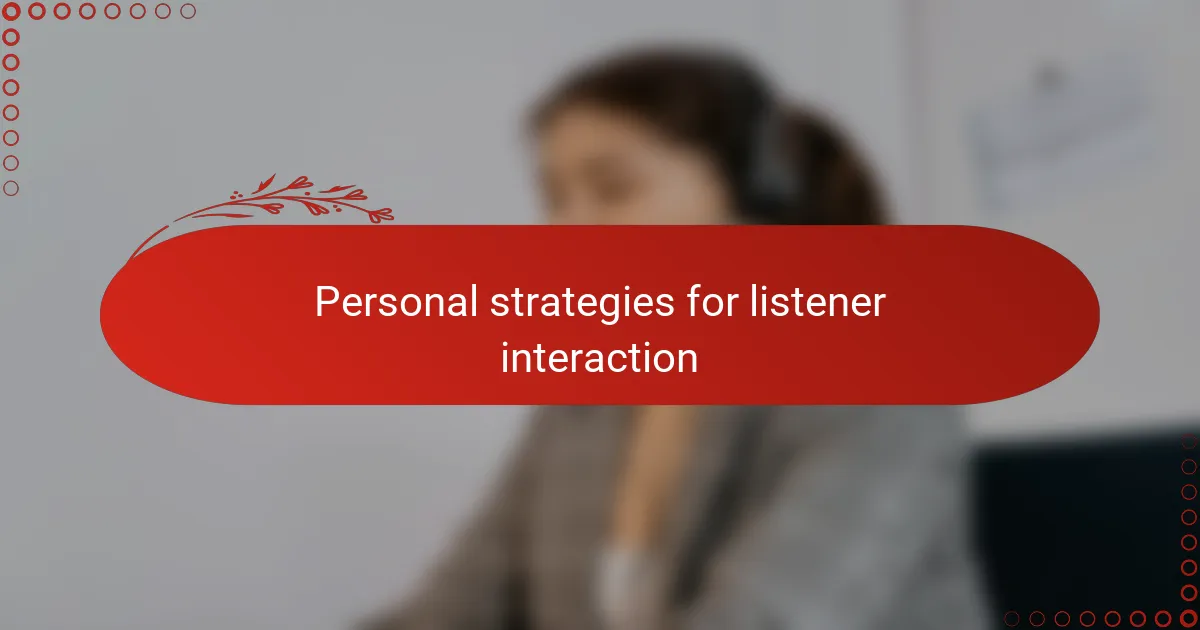
Personal strategies for listener interaction
When I’m on air, I make it a point to speak as if I’m chatting with a friend rather than delivering a scripted monologue. This personal touch breaks down the barrier between broadcaster and listener, inviting them into a dialogue instead of a one-way broadcast. Have you noticed how a casual tone can make you feel more connected, even when you’re miles apart?
Another strategy I swear by is remembering and referring back to callers’ names and previous comments during the show. It might seem small, but acknowledging someone by name creates a sense of recognition and belonging. I’ve had listeners tell me afterward how that simple act made them feel genuinely seen and valued.
I also like to share a bit of my own personality and experiences related to the topic at hand. When I reveal my thoughts, struggles, or even laughter, it encourages listeners to open up and share theirs. It’s that shared vulnerability that, in my experience, turns strangers into a community. Have you ever felt that moment when a radio host’s honesty made you want to pick up the phone and join the conversation?
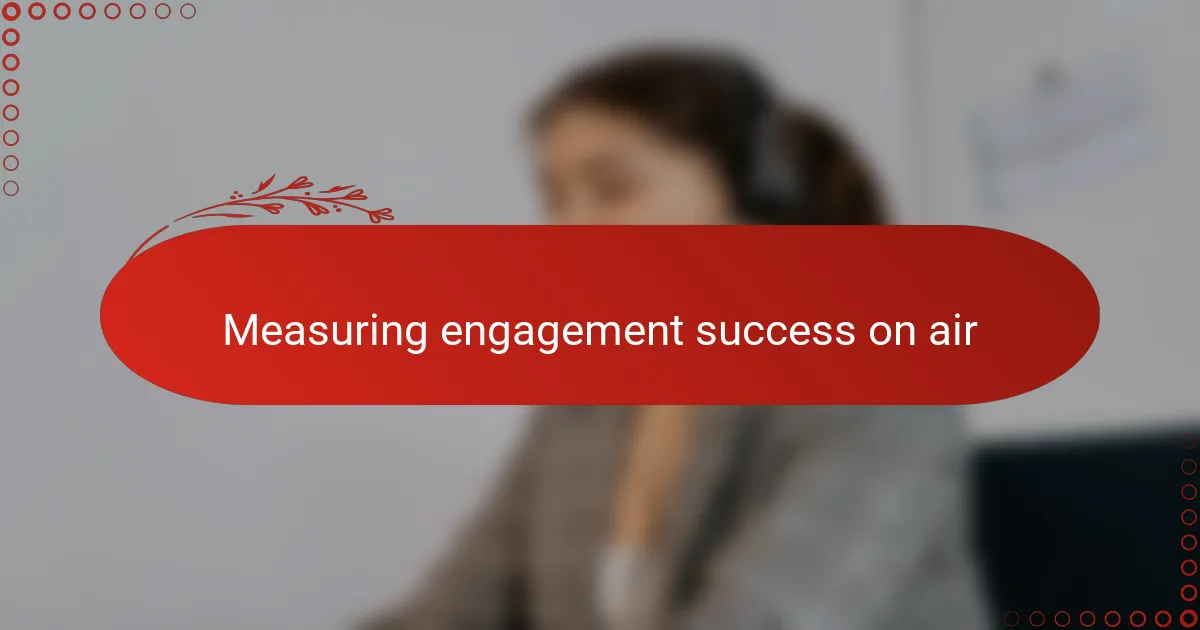
Measuring engagement success on air
Measuring engagement success on air often feels intangible, but I’ve learned to rely on concrete signals that tell me if the connection with listeners truly hits home. For example, the volume and quality of calls, texts, and social media responses during a segment give me immediate feedback—there’s no better feeling than seeing my phone light up with thoughtful comments or passionate debates sparked by something I said. Have you ever noticed how a sudden rush of messages can turn a quiet broadcast moment into a lively discussion? That’s when I know the engagement is real.
I also pay attention to the nature of listener contributions. It’s not just about quantity but depth—when people take time to share personal stories or form their own opinions, it means they feel safe and valued on air. I recall a time when a caller’s heartfelt message led to a chain reaction of similar stories from others; it was like we created a small community within that broadcast. Moments like those show me that engagement is more than interaction; it’s emotional investment.
Beyond immediate responses, I evaluate engagement by tracking repeat interactions and listener loyalty. When people keep coming back, referencing past shows, or following up with new insights, it confirms that the broadcast resonates beyond the moment. From experience, this ongoing engagement is the true measure of success—it turns casual listeners into a steadfast audience who feel genuinely connected to the program and to each other. Doesn’t that feel like the ultimate goal for any broadcaster?
